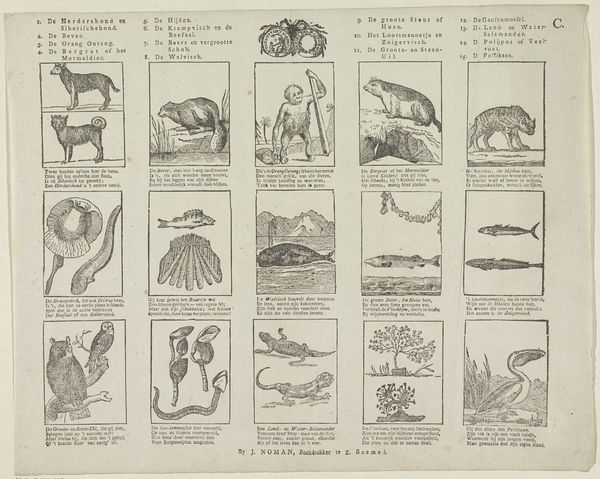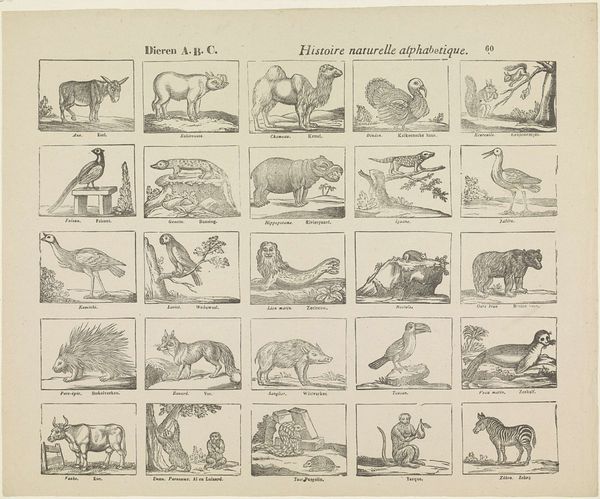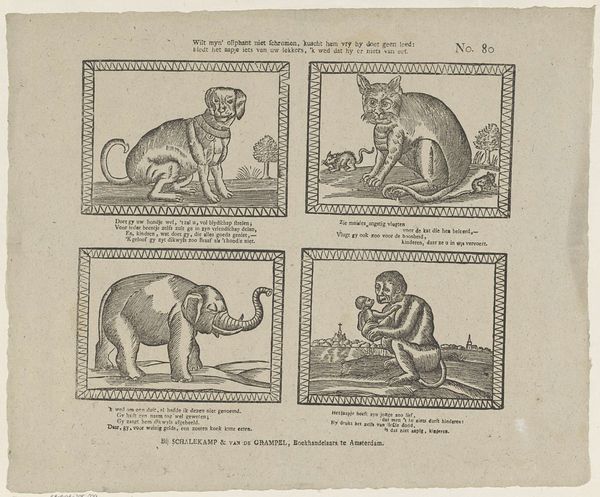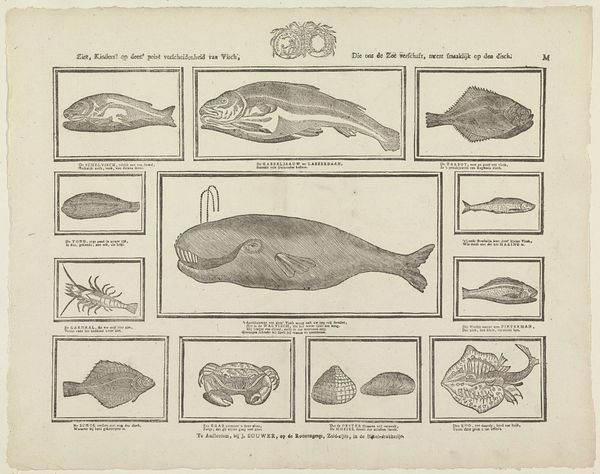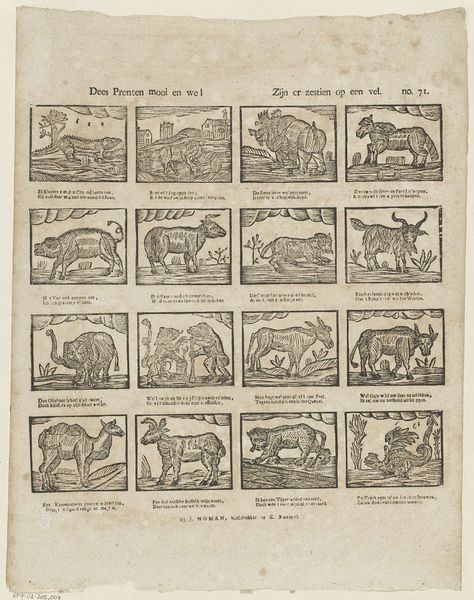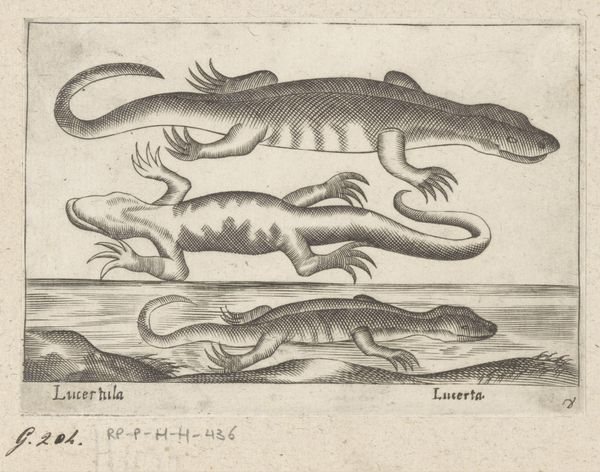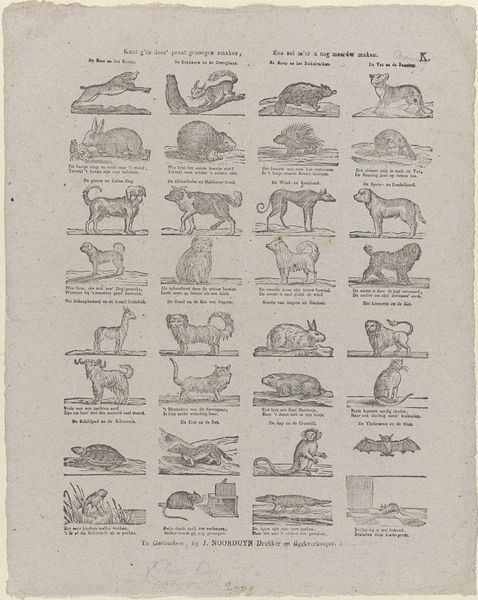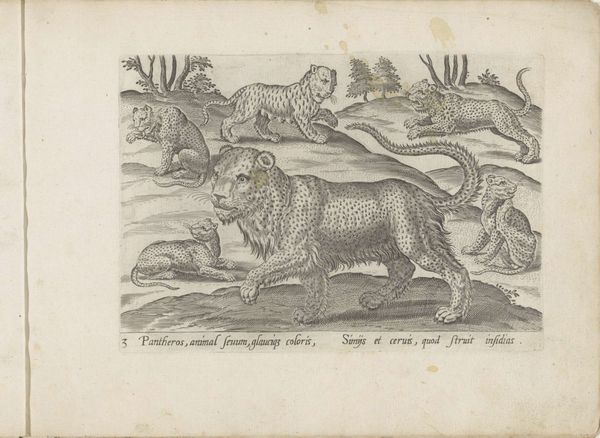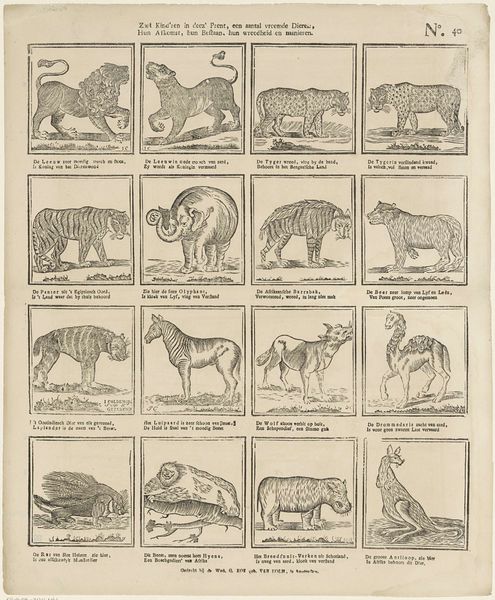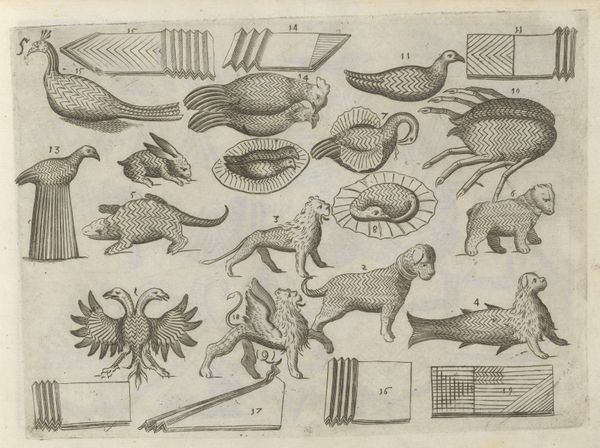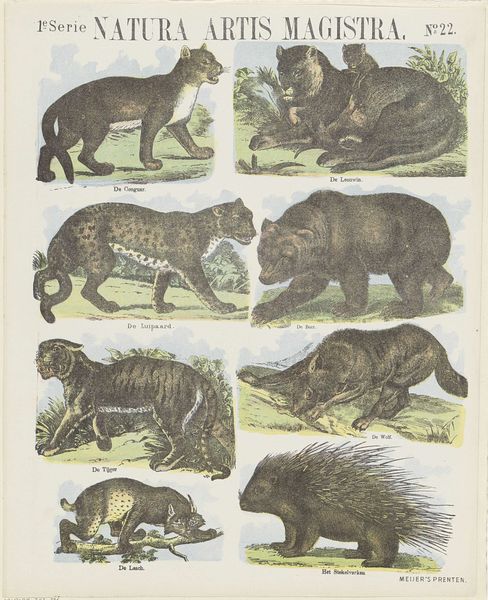
De dieren, kind'ren! die deez' print u vertoonen, En water, aarde of lucht bewoonen, Tweeslachtig des genoemd, verdienen in der daad, Dat gij hunn' naam en aart opmerkzaam gadeslaat 1805 - 1808
0:00
0:00
print, engraving
# print
#
old engraving style
#
folk-art
#
engraving
#
realism
Dimensions: height 328 mm, width 415 mm
Copyright: Rijks Museum: Open Domain
Curator: This print, housed right here at the Rijksmuseum, is by Johannes Bouwer and was created between 1805 and 1808. The full title, rather wonderfully, is: "De dieren, kind'ren! die deez' print u vertoonen, En water, aarde of lucht bewoonen, Tweeslachtig des genoemd, verdienen in der daad, Dat gij hunn' naam en aart opmerkzaam gadeslaat." It’s an engraving showing various animals. Editor: Gosh, what a mouthful for a title! But the animals themselves… They have a strange charm, don't they? Almost like something out of a slightly unsettling children’s book. That hippo-thing in the middle is really stealing the show! Curator: Indeed! I think the title is crucial. Bouwer highlights “animals...that inhabit water, earth, or air". I think there is an attempt here, albeit somewhat clumsy by modern standards, to create an encyclopedic compendium of the natural world. We should consider how 19th-century printmakers visualized and organized knowledge through graphic means. Editor: Compendium, huh? I get it! It's more than just animals, it’s a whole system. It reminds me of those old cabinets of curiosities—full of slightly wonky taxidermied creatures. Curator: Precisely! The organization reveals contemporary understanding of classification, power dynamics between humans and nature, as well as potential imperial ambitions reflected in representations of 'exotic' animals. Editor: True, but there's also an innocence to them! That turtle, for example, looks more like a slightly disgruntled house guest. There’s also a bat down there in the corner. And did bats even belong in those encyclopedias back then? What I mean to say is, are these realistic representations or are we entering mythical territories? Curator: A critical approach would note that within folk art and early scientific illustration there are often inaccurate and exaggerated elements based on travelers’ tales and limited direct observation, blending objective documentation with subjective interpretation and imagination. This blending reveals cultural attitudes towards the natural world at the time. Editor: Right! Like a visual game of telephone where nature gets hilariously distorted. What a strange, gorgeous artifact. Curator: It makes us question how we, in the 21st century, impose our own order onto nature through lenses like environmentalism or conservation biology. Editor: Agreed. I wonder what these funny little critters will make us think about a century from now?
Comments
No comments
Be the first to comment and join the conversation on the ultimate creative platform.
